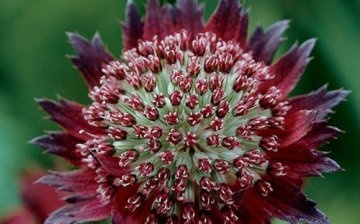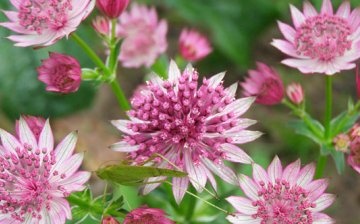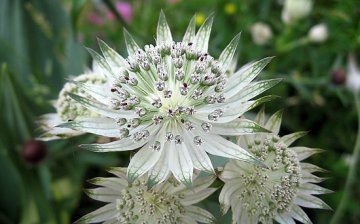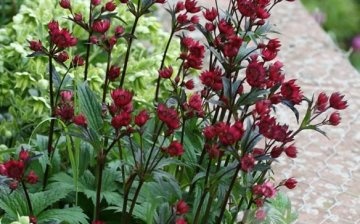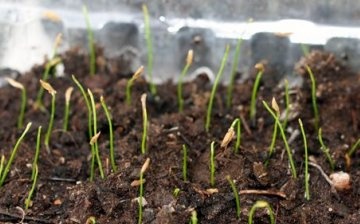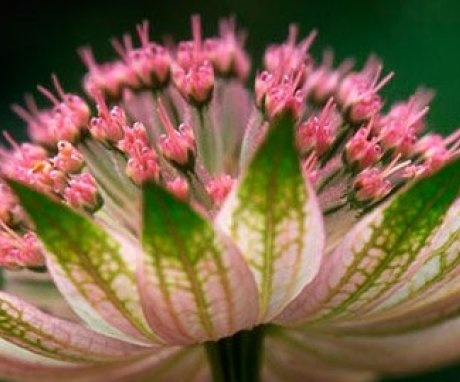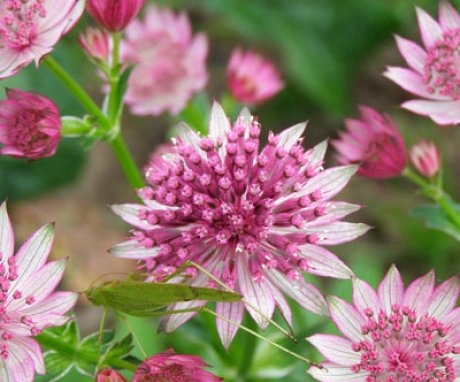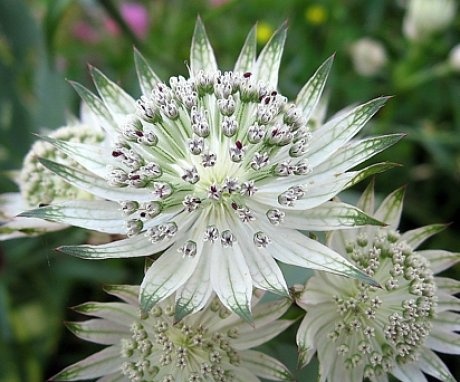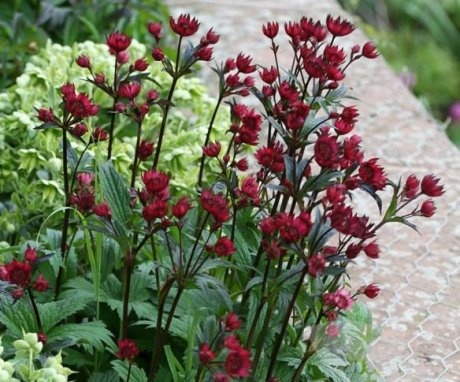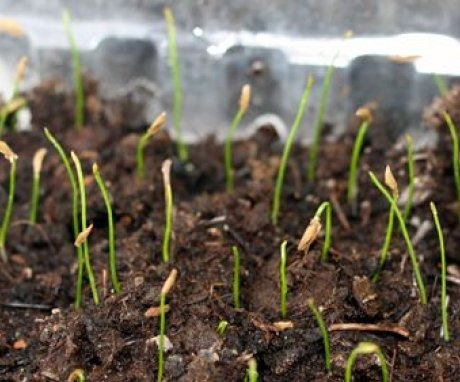Astrantia: characteristics and cultivation of a flower
Astrantia is a fairly popular plant among many gardeners and landscape designers, not only for its very attractive appearance, but also for its ease of care.
Content:
Description of the plant
Astrantia belongs to the category perennial plants family of celery. The bushes of this plant are capable of growing very quickly. The indisputable advantage of Astrantia is that it can fully grow and develop in the shade.
This plant is characterized by:
- The presence of deeply cut large leaves.
- The decorativeness of this part of the flower remains throughout the season.
- The inflorescence of the umbrella acts as a flower of this plant. The inflorescence includes a large number of small flowers.
- The color of flowers can have one tone or several shades.
- The flowers of this plant can be pale pink, reddish purple, wine red, dark red, etc. flowers. The foliage of this plant is dark green in color.
Astrantia has about 10 species, which allows gardeners to choose the most optimal option for their site.
Types of astrania
Astrantia is divided into several types. The section is made in accordance with the color of the flowers of this plant, as well as the height of the bush:
- The Abble road plant variety is characterized by the presence of large inflorescences that have a reddish-purple color... The flower wrappers are characterized by a dark purple color. The height of this bush is 45 to 60 centimeters. Flowering begins in mid-summer and ends in late summer. It is best to plant the plant in semi-shaded areas.
- Astrantia Buckland is characterized by silvery-green wrappers that accentuate the beauty of the delicate pink flowers. This plant begins to bloom in June and ends in September. Astrantia shrub of this species can reach a height of 70 centimeters. This plant can fully grow and bloom both in sunny places and in partial shade.
- The Claret plant variety has wine-red inflorescences, which are characterized by the presence of transparent wrappers. The height of this plant can be from 50 to 55 centimeters. This variety is characterized by a fairly long flowering. The bush begins to bloom in June, and flowering ends in September. Planting of this plant variety can be done both in partial shade and in full shade.
- Hadspen Blood is a rather powerful and tall variety of Astrantia. Its height can be from 75 to 80 centimeters. The inflorescences of the plant have a very original blood red color. This plant differs from its counterparts in a rather long flowering. It begins in late spring and ends in late summer. It is best to plant this plant in places of light shade.
- The Lars plant variety is characterized by the presence of large inflorescences that are dark red in color. The wrappers of this plant are lighter, which emphasizes the original color of the flowers. The flowering of the bush is long enough, which speaks of its value. Astrantia of this variety begins to bloom in June, and ends at the end of September.The height of the bush can be from 55 to 70 centimeters. This plant will grow best in areas of light partial shade.
- The Moulin Rouge plant cultivar has deep wine-red inflorescences, which are characterized by the presence of almost black wrappers. The flowering of this plant begins in early summer and ends at the end. This plant can grow fully in open sunny places and in partial shade. In shaded areas, the color of the flowers is less pronounced.
- Astrantia Primadonna is characterized by light red wrappers that accentuate the beauty of the deep red buds. This flower begins to bloom in June, and ends at the end of summer. The height of the flower is about 70 centimeters. This plant can fully grow and bloom, both in the sun and in partial shade.
Plant care
Astrantia is characterized by ease of maintenance. For its full growth, it is necessary to regularly perform the following actions:
- Watering.
- Pruning.
- Correct soil selection.
Watering this plant is necessary as needed. Astrantia loves moisture very much, so the flower needs to be regularly watered. To plant this plant, you do not need to think about what kind of soil to pick up. Astrantia easily takes root on any soil. But if you give preference to loose and moist soils when planting this plant, then it will grow much better.
If necessary, the bushes of Astrantia can be fed.
To do this, you can use ordinary humus... Fertilizer must be applied to the soil before planting the plant. To ensure the full bloom of Astrantia, it is necessary to cut off the faded flowers in a timely manner. The overgrowth of the bushes of this perennial is carried out within 3-4 years.
These massive plants can grow in one place for 10-12 years. When planting astrantia, it is necessary to take into account the fact that this plant is quite large, so the distance between the bushes should be about 50 centimeters. If the bushes of Astrantia are very large, then they need to be tied up. Before wintering, the bushes of Astrantia must be cut off. This will promote good flowering plants for the next year.
Breeding features
This plant can be propagated in three ways:
- Seeds.
- By dividing the underground rhizome.
- By cuttings.
For propagation of Astrantia by seeds, you can buy raw materials on the market, or you can collect it yourself from already formed bushes, which are more than 3-4 years old. Seeds are planted in the autumn. This is because Astrantia requires stratification.
Plants planted with seeds for the first time will be able to bloom in three years.
Also, planting seeds can be done in the spring. The first shoots appear in 3-5 weeks. A few weeks after the appearance of the first shoots, the plant can be dived. When Astrantia reproduces with self-collected seeds, a change in flower color can be observed. If the seeds are purchased, then the color will be the one indicated by the manufacturer.
To obtain a plant that completely repeats the characteristics of its predecessor, you can choose such a propagation method as cuttings.
Basal rosettes are the raw material for this propagation. They are characterized by a fairly high level of engraftment, which allows them to be planted in the ground in 3-4 weeks.
In the early spring period, this plant can be propagated by dividing the rhizome:
- This action is performed before the onset of bud proliferation.
- It is best to plant the roots in fertile and light soil in a semi-shaded place.
- The first rosette of Astranian leaves will appear in the first year of planting.
- For the winter, new roots are covered with a layer of fallen leaves in order to protect them from the effects of frost.
- The plant will start growing very early next year.
- Astrantia during this period throws out its first flower stalks and begins to bloom.
This plant is cold-resistant, which favorably affects its resistance to various diseases and pests. This plant is very attractive and at the same time does not require much effort from the grower during its cultivation.
More information about perennials can be found in the video.



